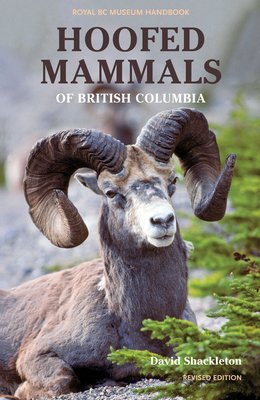Hoofed Mammals of British Columbia

Hoofed Mammals of British Columbia
Hoofed mammals are the most abundant large mammals in British Columbia. Nine wild native species live here: Elk, Moose, Mule Deer, White-tailed Deer, Caribou, Bison, Mountain Goat, Bighorn Sheep and Thinhorn Sheep. One introduced species, European Fallow Deer, also lives in small populations on some coastal islands. David Shackleton provides a comprehensive examination of BC's hoofed mammals, discussing their evolution and general biology, including morphological and behavioural adaptations to their unique lifestyle. He also describes each species and subspecies in detail and discusses its social organization, habitat, diet, reproduction and life expectancy. Each species account has a distribution map and data on taxonomy, populations, conservation status and traditional Aboriginal use. Fine illustrations and two identification keys help readers recognize species by external features or dried skulls.
PRP: 123.69 Lei
Acesta este Prețul Recomandat de Producător. Prețul de vânzare al produsului este afișat mai jos.
111.32Lei
111.32Lei
123.69 LeiLivrare in 2-4 saptamani
Descrierea produsului
Hoofed mammals are the most abundant large mammals in British Columbia. Nine wild native species live here: Elk, Moose, Mule Deer, White-tailed Deer, Caribou, Bison, Mountain Goat, Bighorn Sheep and Thinhorn Sheep. One introduced species, European Fallow Deer, also lives in small populations on some coastal islands. David Shackleton provides a comprehensive examination of BC's hoofed mammals, discussing their evolution and general biology, including morphological and behavioural adaptations to their unique lifestyle. He also describes each species and subspecies in detail and discusses its social organization, habitat, diet, reproduction and life expectancy. Each species account has a distribution map and data on taxonomy, populations, conservation status and traditional Aboriginal use. Fine illustrations and two identification keys help readers recognize species by external features or dried skulls.
Detaliile produsului










